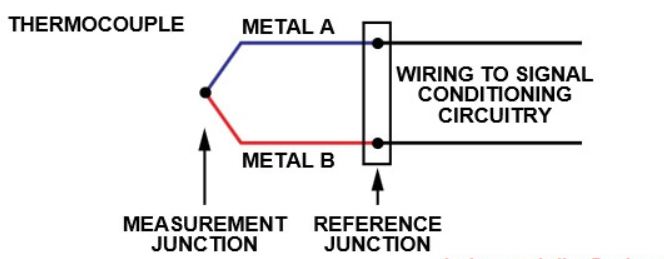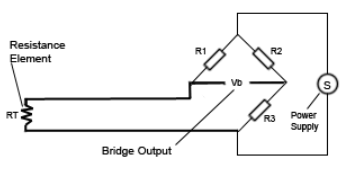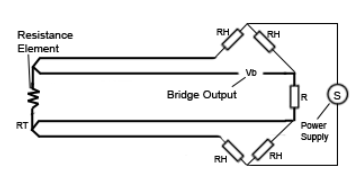We’re here to help
Let us help you
Measuring temperature impacts all aspects of our daily lives. From checking your morning brew hasn’t gone cold to measuring body temperature to detect medical problems, identifying if something or someone is too hot or too cold helps us make informed decisions.
It’s also one of the most measured parameters for businesses where accurate temperature measurements are a must. These include the food sector, healthcare, manufacturing, materials testing, and oil and gas.
We’re not the kind to blow hot and cold, but we’re going to talk all things temperature, and help you understand how and why it is measured.
In simple terms, temperature refers to how hot or cold an object or material is. It tells us how much heat or energy the object has.
Temperature measurement can also be defined as the measurement of the average kinetic energy of the particles in an object. When temperature increases, the motion of these particles increases. Think about the warm water you use to fill your hot water bottle with. It has more active molecules than cold water, which move around quickly, producing the heat to keep you warm and relieve those aches and pains.
Measuring the heat present in an object is either carried out by touch or more commonly with a specialist temperature measuring device such as a thermometer, thermocouple, or temperature data logger. The most suitable testing instrument for measuring temperature depends on the specific application and needs of your project.
Temperature is most commonly based on the melting point of ice (0 degrees or 0°C) and the boiling point of water (100 degrees or 100°C). This is known as the Celsius scale.
The SI unit of measurement for temperature is the kelvin (K). Temperature in degrees Celsius is obtained by subtracting 273.15 from the numerical value of the temperature expressed in kelvin. The kelvin and degree Celsius have been defined by taking a fixed numerical value of the Boltzmann constant, k or kB. This change in definition acknowledges that temperature is fundamentally a measure of the average energy of molecular motion.
Human health is especially affected by extreme temperatures, but correct temperature measurement doesn’t just stop you from being burned or chilled to the bone. It’s also very important for controlling and monitoring various processes across many industries. For example, food manufacturers must take a number of daily temperature checks to keep the food they serve safe and fit for consumption.
Temperature also affects biodiversity and natural environments, agriculture, and energy demand, but for many businesses the reliance on precise temperature controls ensures product quality, consistency, and compliance with regulatory requirements.
Many different kinds of sensors are used to measure temperatures. Thermometers are probably the most well-known device for measuring how hot or cold a material, object, or person is, but instruments like RTDs, thermocouples, and pyrometers are also used to detect heat levels and provide a numerical reading.
Let’s look at the mechanics of some of these instruments and how they serve the purpose of measuring the temperature of a medium accurately and efficiently in a given set of requirements.
A classic glass tube thermometer measures temperature using liquid mercury or alcohol known as a liquid in glass thermometer . This chemical element expands or contracts as the temperature increases or falls. You can then read how hot it is on the scale, with thermometer readings measured in degrees Celsius or Centigrade (°C).
However, digital thermometers are now more frequently used than their old liquid-in-glass counterparts because of their ability to react to temperature changes almost instantly. The digital versions use electric sensors to measure how much voltage or current flows through them, and then provide a digital readout. The voltage or current changes as the temperature does.
A digital Testo 925 thermometer being used to measure the temperature of a pot of hot soup on a stovetop.
Measuring extreme temperatures is best left to a thermocouple. These cunning temperature measurement devices work by measuring voltage, and are found in a wide range of industries and applications from scientific research to vehicle diagnostics.
A thermocouple consists of two wires of different metals. These dissimilar metals are joined together to form a measurement junction often referred to as a hot junction — this junction is placed at the location you require the temperature measuring.
There is a second reference or cold junction which is located away from the temperature to be measured. A voltmeter measures the voltage generated by these dissimilar metal junctions, known as the electromotive force. The cold junction is referenced to 0°C modern thermocouple indicators automatically by the means of an electronic circuit to compensate for this cold junction, allowing for the type of thermocouple being used and displaying the temperature of the hot junction in the chosen unit of measurement.
 Thermocouple example.
Thermocouple example.
There are many types of thermocouple commercially available. They all have particular properties that make them more suitable for certain environmental conditions, temperature ranges, and accuracy requirements. The type is identified by the letter it is given — thermocouple type K, thermocouple type J, etc.
The colour of the wires are specified by the International Electrotechnical Commission (IEC) and other international standards so that they can be easily identified when in the field. For example, according to the IEC requirements; Type K have a green outer sheaf, a white negative leg, and a green positive leg. We will discuss the most common types found in the industry — types K, J, T, and N.

Type K thermocouples are the most widely used thermocouples because of their relatively low cost and maximum operating temperature of 1100°C. Type K thermocouples are commonly used in the nuclear industry because of their radiation hardness, along with other applications where temperatures reach 550°C and higher.
Technical specification table for Type K thermocouples, displaying conductor materials, EMF generation, working temperature ranges, and IEC 60584-1 tolerance classifications for different temperature ranges.

Type J Thermocouples are another popular choice because of their reliability and robustness. Type J’s can be used in a reducing atmosphere which most other thermocouples can’t, and are well suited to high temperature environments such as monitoring temperatures in industrial furnaces and ovens.
It has a reduced working range compared to the Type K, and are susceptible to corrosion of the iron leg when used below ambient temperatures.
Table displaying Type J thermocouple specifications, including conductor combinations, EMF generation per °C, working temperature range, and output tolerances per IEC 60584-1.

Type T Thermocouples originally were called Copper-Constantan. These are ideal for low-temperature measurements and are widely used in laboratories for the temperature range -200°C to + 400°C. Type T’s also have excellent repeatability of +/- 0.1°C.
Type T thermocouple specification table listing EMF generation, temperature ranges, and tolerance values for copper and copper-nickel conductor pairs under IEC 60584-1 standards.
 The invention of the Type N thermocouple was expected to replace the Type K with its similar cost, greater oxidation resistance, and increased temperature range. It can handle up to 1280°C for short periods, with better repeatability at 300°C. Type N Thermocouples are widely used in aerospace ovens and autoclaves.
The invention of the Type N thermocouple was expected to replace the Type K with its similar cost, greater oxidation resistance, and increased temperature range. It can handle up to 1280°C for short periods, with better repeatability at 300°C. Type N Thermocouples are widely used in aerospace ovens and autoclaves.
Type N thermocouple data chart showing EMF change, temperature ranges, and IEC 60584-1 tolerance classes with values for copper and copper-nickel conductors.
An RTD temperature sensor works by measuring the resistance of a material. As the temperature increases or decreases, the resistance of the measuring sensor changes. By measuring this voltage, you can determine its resistance, and subsequently its temperature. RTDs can typically measure temperatures up to 850°C.
Like thermocouples, RTDs come in many different types and are manufactured to different standards. We’ve discussed a couple of the most common types below.
The most common type of RTD are the Platinum Resistance Thermometers PT100. The PT100 has a resistance of 100 ohms at 0°C (hence its name). Its resistance changes by 0.392 Ohms for every degree centigrade change in temperature.
The advantages of the PT100 vs a thermocouple is its enhanced accuracy for lower temperature applications. A typical working range for a PT100 is -200 to 800°C, but the actual range is dependent on the type of RTD probe, as well as following the manufacturers recommendations and specifications carefully.
RTDs do not require compensation cables and theoretically any cabling can be used — they also don’t require a cold junction measurement to calculate the actual temperature.
 Resistance thermometer construction.
Resistance thermometer construction.
A PT100 is more expensive, while long cable runs need to be avoided and it might be necessary to use a transmitter over longer runs. One of their other drawbacks is the resistance in the leads connecting it to the temperature indicator will introduce an error. To overcome this, the most basic set up of two wires can have either a 3rd or 4th wire added to the circuit to help elevate the resistance in the other leads.
Three wire RTDs are very common in industrial applications and four wire is reserved for high accuracy applications in laboratories and calibration laboratories. The three or four wire set-up is more expensive than the two wire for several reasons — the sensor is more expensive and you will need additional cabling for the 3rd or 4th wire.
 Two wire RTD connection.
Two wire RTD connection. Three wire RTD connection.
Three wire RTD connection.
 Four wire RTD connection.
Four wire RTD connection.
Nickel RTD sensors won’t set you back as much as a platinum RTD, making them ideal for HVAC applications and industrial applications where cost is a primary concern. They also offer strong corrosion resistance, but have a smaller temperature range. It’s important to note that nickel also ages rapidly, resulting in lower accuracy over time.
The only way to ensure your measuring temperature accurately is through regular calibration of your temperature measuring instruments. AML Instruments are able to carry out UKAS accredited temperature calibrations on many makes and models of thermometers, thermocouples, RTDs, and temperature probes just to name a few.
Our UKAS Temperature Calibration scope details our accredited capabilities and CMCs. This will be expanded over time to include a larger range of temperature calibrations. Please note, we also cover a wider range of temperature calibrations that are traceable to National Standards.
Whether we visit you on-site or you send your temperature measuring devices to our in-house laboratory, grab our UKAS temperature calibration services while their still hot by contacting us today.
Let us help you